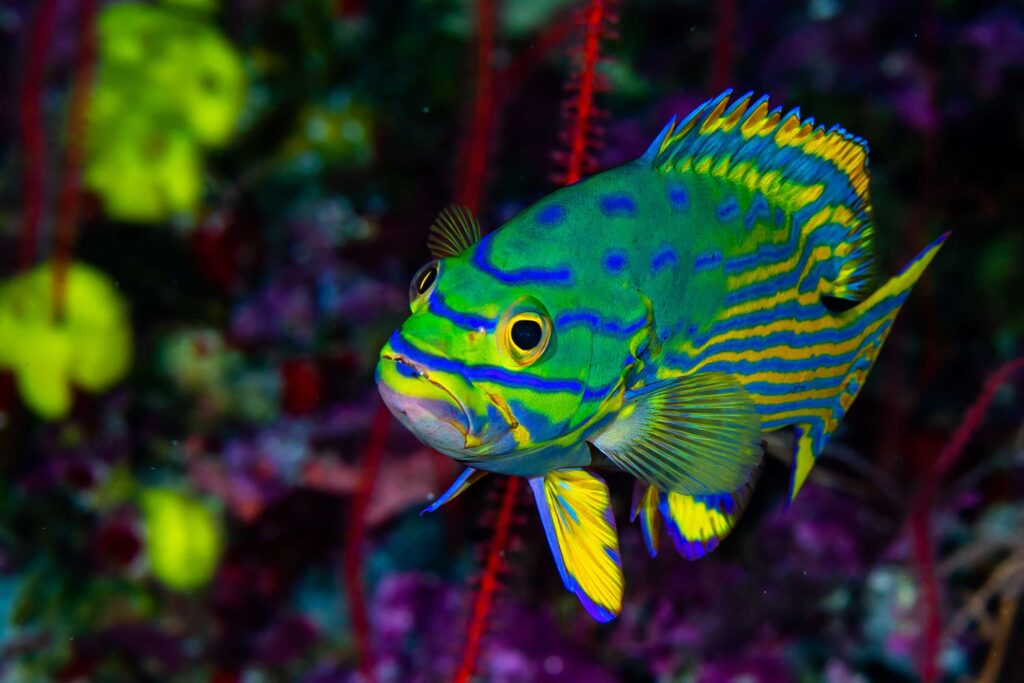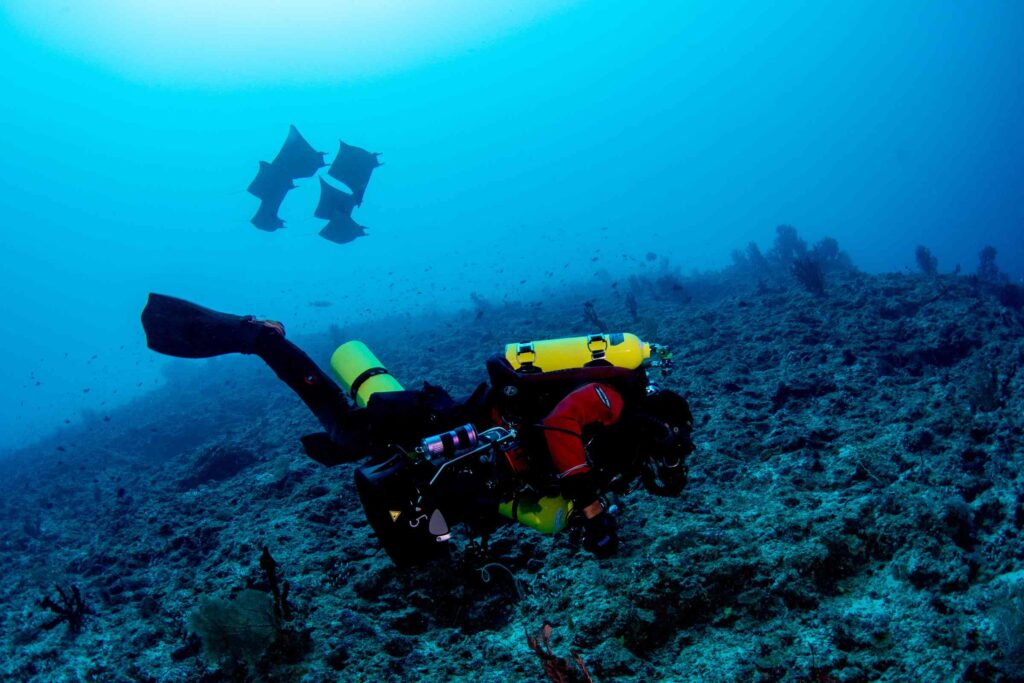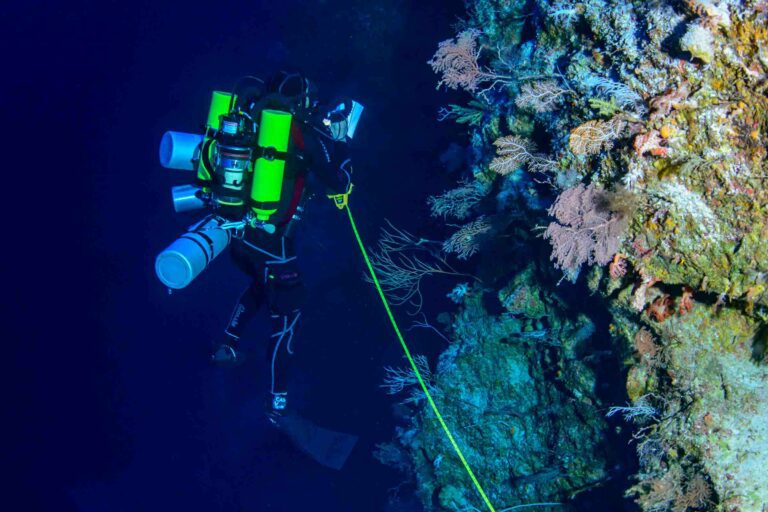Mysterious deep-lying coral reefs function so differently to shallow reefs that they are unlikely to offer a refuge for shallow-reef fish seeking to escape the consequences of ocean warming.
That’s the discovery that has followed hundreds of often-challenging dives totalling more than 1,000 hours and as deep as 150m at sites across the Pacific and the Atlantic. Using closed-circuit rebreathers to enable the necessarily extended dives, the diving researchers have conducted biodiversity surveys across a fixed area to standardise observations from different locations at different times.
Also read: Pristine Seas kicks off 5-year Pacific venture
Scientists from California Academy of Sciences (CAS)’s Institute for Biodiversity Science & Sustainability collaborated with Brazilian colleagues from the University of São Paulo, Federal University of Espírito Santo and the Instituto Nacional da Mata Atlântica on the Hope for Reefs initiative.
Together they collected what they describe as an unprecedented amount of data analysing the different species that occur on coral reefs at depths ranging from the shallows to the low-light 30-150m mesophotic zone.

“Our findings reinforce that mesophotic ecosystems are not necessarily a refuge for shallow fishes fleeing warming waters,” says CAS curator of ichthyology and Hope for Reefs co-director Dr Luiz Rocha, senior author of the paper.
“These deeper reefs appear to be saturated, meaning that most niches where newly arrived species might survive are already filled by species that evolved under the distinct environmental conditions found at depth.”
Coral Triangle
Scientists have long known that numbers of coral, fish and invertebrate species on shallow reefs decline the further they are from the biodiverse Indo-Pacific Coral Triangle – but whether that pattern held true for deeper reefs had remained a mystery.
“Most of our knowledge about biodiversity on coral reefs is based on the shallows,” says co-lead author Dr Hudson Pinheiro of the University of São Paulo, a CAS research fellow. “But when we sink a little bit deeper, we see that everything changes.

“Everything we thought we knew about coral-reef assembly rules – the ecological pressures that explain what species or groups of organisms survive and thrive in a given ecosystem – changes with depth.”
The findings point to the presence of a strong ecological filter between shallow and deep coral reefs, and this could prevent shallow-water species from seeking colder, deeper reefs in the face of climate change – making a strong case for expanding reef protection to greater depths, say the scientists.
Hard work
“Needless to say, doing transects at those depths is hard work,” says Dr Pinheiro. “It is physically and mentally taxing to take detailed notes on what species you see while also trying to survive.”
Because of these diving challenges, the number of surveys conducted at each site varied slightly depending on environmental conditions – for example, in unexpected currents.

“Studying deep coral-reef environments, often for the first time, introduces a lot of complexity and uncertainty,” says ecologist and co-lead author Dr Chancey MacDonald of the CAS. “This naturally makes fully balanced sampling among locations and depths very difficult.
“To overcome this, we subsampled random survey combinations of equal area for each location and depth-range thousands of times to make robust estimates of species assemblages and their ecological drivers.”
“About 20% of all reef fishes are exclusively recorded in the mesophotic zone, yet in many ways they remain a mystery,” sums up Dr Rocha. “It’s imperative that we continue to learn about and advocate for these incredible deep reefs.” The team’s paper has just been published in Current Biology.
Also on Divernet: Sea-Slug Supremo Tags 14 New Nudis, Coral DNA Reveals Who’s The Daddy, Rosy Wrasse Marks Maldives First


Wow
Garbage article, junk voodoo seudo anecdotal observations. Not even basic science. Warming shallow waters? Really? Where’s your data? I dive multiple times a week. I see zero rising water or fantasy high Temps. Deep water reefs already filled with life, gosh, no kidding. I’m shocked, totally suprised. NOT. how long did the grant money take to figure that one out ?
Found the conspiracy nut! This one’s a perfectly baked lasagna with layers of “big word vomit”, “personal experience”, distrust of science, condescending sarcasm, covered with a generous layer of denial and baked to perfection in a repurposed aluminum foil hat